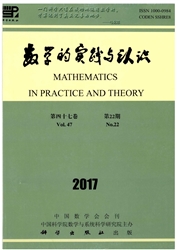

 中文摘要:
中文摘要:
房地产业是宏观经济的重要组成部分,既受到整个宏观经济发展水平的制约,又发挥着促进宏观经济发展的作用,明确二者的关系有利于对房地产行业进行正确定位,同时又是进行宏观分析的前提和基础.文章首先基于经典的索罗经济增长模型,将资本要素分为土地要素和一般资本要素,构建房地产业对宏观经济总量影响的理论模型.其次,将第三产业占GDP比重作为衡量产业结构特征的指标将我国279个城市划分为两大类:以第一、二产业为主的城市群和以第三产业为主的城市群.最后,以2005年至2014年的8个宏观经济指标作为研究对象,运用SPSS软件对房地产业对宏观经济的影响进行实证研究,得出以第三产业为主的城市群对以第一、二产业为主的城市群具有模范参考作用.
 英文摘要:
英文摘要:
The real estate industry is an important part of macro economy, not only restricted by the macro economic development level, but also play a role in promoting macroeconomic development. So, clarify the relationship between them is conducive to the correct positioning of the real estate industry, and is also the premise and basis for the macro analysis. Firstly, based on the Solow economic growth model the capital element is divided into land element and general capital element, the real estate industry theory model on macro economy. Secondly, this paper regards the proportion of the third industry in GDP as an index used to measure the characteristics of industrial structure and divides the 279 cities in China into two categories: The urban agglomeration which is mainly based on the first and the second industry and the urban agglomeration which is mainly based on the third industry. Finally, this paper regards 8 indexes from 2005 to 2014 as research objects and uses SPASS to make an empirical research on the impact of the real estate industry on the macro economy, and draw the conclusion that the urban agglomeration which is mainly based on the third industry is a model reference for the urban agglomeration which is mainly based on the first and the second industry.
 同期刊论文项目
同期刊论文项目
 同项目期刊论文
同项目期刊论文
 期刊信息
期刊信息
